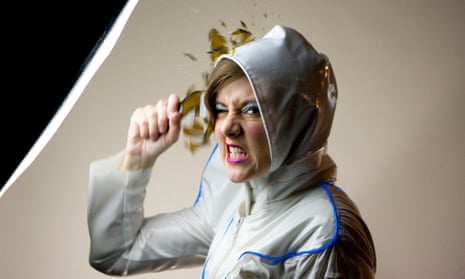Since 2000 there has been an unprecedented surge in self-employment. According to the RSA, there has been a 40% increase in micro-businesses and one in seven of the workforce are now self-employed. I recently joined the UK’s freelancer community and I’m trying to make a living in the arts, navigating the financial ebbs and flows.
Since 2008/9, self-employed earnings have dropped by 22%. The typical self-employed person now earns 40% less than their employed counterpart. While you might expect the commercial sector to drive a hard bargain, in my field, the publicly-funded visual arts – in which self-employment stands at around 50% – it’s more worrying to find that the salaries of arts employees increased during the recession, while freelance fee rates went down.
It’s usually claimed that’s how it is, because self-employment is a “lifestyle” in which the enjoyment you get from it outweighs the need to make money. As visual artist Elena Thomas says: “I love feeling so liberated. However, after decades of employment and salary, the lack of regular payment is hard going and cash flow is an issue.”
It’s unpopular in the arts to discuss such grimy issues openly, although performer Bryony Kimmings famously has taken arts venues to task for trying to squeeze her fees to make their budgets meet.
With some forecasting that levels of self-employment will supersede those of the public sector as early as 2017, it’s worth pointing out another study, which shows that only 30% of self-employed people contribute to a pension, compared with 52% of employees.
I’m wondering here just how many artists and performers can afford to ensure wellbeing in their later years?
A Demos report calls for simplification of self-employed status rules and strengthening of prompt payment codes. If the self-employed improve their skills and retain an innovative edge, they also need tax breaks for investing in professional development. Acknowledging the self-employed pension gap, Demos advocates for a tailored pension scheme, while the RSA (among others) argues for reform of Universal Credit, which severely undermines the self-employed.
So would I recommend a freelance life? In some ways, absolutely. For example, forget the weekly dash for the 7.29am train from Newcastle to Kings Cross. Instead, I take a daily walk among the deer and Red Kite of Chopwell Woods to refresh both mind and body. I’ve also got the headspace to read and write about a raft of interesting books.
On the downside, have I earned enough this month to pay my share of the household costs? The answer is probably not, despite working pretty much every day of it. Then there’s the problem of cash-flow, something 79% of self-employed people say cripples their business. Also, the cost of professional networking at conferences and gatherings, if you’re not on expenses, is prohibitive.
Looking to the future, Creative and Cultural Skills chief Pauline Tambling is pushing for reform to the education system so that it’s genuinely equipped to produce the next generation of creative people who will be capable of “growing” their own jobs and confident in managing the self-determination and personal resilience of self-employment. Tambling points to a Nesta report on future trends, which shows that because creative jobs are at no or low risk of automation, their future is safer.
In the run up to the general election, perhaps freelancers can find comfort in the offers of the political parties? The Tories have pledged to crack down on late payment from big businesses and, like the Lib Dems, make 30-day payment terms standard. The Green Party will also strengthen payment laws and give the self-employed maternity and parental leave rights. Labour is committed to a freelance charter and leader Ed Miliband promises to deliver equal rights for the self-employed and (hurrah!) to ban unpaid internships. The SNP maintains a strong line on supporting small business and Plaid Cymru will introduce tax relief for the self-employed while training.
So, nothing society-changing or radical there.
A more refreshing alternative, my plan – and maybe you will join me in Glasgow in June – is to check out Small is Beautiful: the “annual inspirational conference” and a celebration of the world of creative micro-businesses and enterprises. For freelancers such as myself who work alone, now is the time to be with like-minded folk, learning, collaborating and celebrating.
Freelance arts professional? Share your stories below the line
Join our community of arts, culture and creative professionals by signing up free to the Guardian Culture Pros Network.
